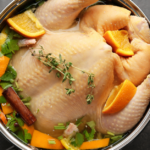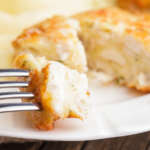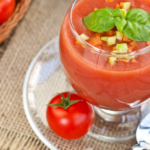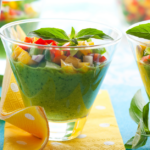Flavors Worth Savoring
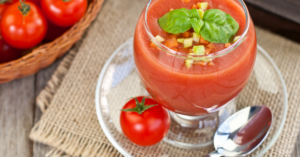
The Gluten-Free Diet is an essential lifestyle choice for individuals with celiac disease, gluten sensitivity, or those seeking to improve digestion and overall well-being. Following a gluten-free diet means eliminating all sources of gluten, a protein found in grains like wheat, barley, and rye. If you’re new to this diet or simply exploring healthier food choices, this guide will answer your questions, provide valuable tips, and give you the best insights to ensure your gluten-free journey is successful. Below, we answer key questions and offer suggestions for starting a gluten-free diet plan.
There are plenty of delicious gluten-free foods that are naturally free of gluten. These include:
In addition, there are numerous gluten-free versions of traditionally gluten-containing foods, such as gluten-free pasta, bread, and baked goods.
Gluten-free means that a food product does not contain gluten—a protein found in wheat, barley, and rye. For people with celiac disease or gluten sensitivity, consuming gluten can trigger an immune response that damages the small intestine and leads to uncomfortable symptoms like bloating, fatigue, and digestive issues. A gluten-free diet is essential for managing these conditions and preventing long-term health complications.
On a gluten-free diet, it’s important to avoid foods that contain gluten. These include:
Gluten can often hide in foods you wouldn’t expect. Processed foods, sauces, seasonings, and even certain medications can contain gluten. Some common items that may have hidden gluten include:
Always read labels carefully and look for gluten-free certifications to ensure you’re making the right choices.
Gluten is a type of protein found primarily in wheat, barley, and rye. It helps food maintain its shape, acting as a glue that holds products like bread and baked goods together. While many people can digest gluten without issues, those with celiac disease, gluten intolerance, or gluten sensitivity need to avoid it. Gluten consumption can cause inflammation, damage the small intestine, and lead to long-term health complications for these individuals.
Plan Your Meals: When starting a gluten-free diet, planning is key. Make a list of gluten-free foods you enjoy and plan your meals around them. This helps prevent reaching for convenience foods that might contain hidden gluten.
Read Labels Carefully: Many foods might seem gluten-free, but labels can reveal hidden gluten in ingredients like malt, modified food starch, or wheat derivatives. Look for products labeled “Certified Gluten-Free” for added security.
Stock Your Kitchen with Gluten-Free Staples: Invest in gluten-free pantry staples such as gluten-free flour, gluten-free pasta, rice, quinoa, and legumes. This will make meal preparation easier and help you avoid the temptation of gluten-containing foods.
Experiment with Gluten-Free Recipes: Trying new gluten-free recipes is a great way to make the transition fun and enjoyable. From gluten-free bread to desserts, you can explore a variety of delicious dishes without feeling restricted.
Eat Naturally Gluten-Free Foods: Focus on whole foods like fruits, vegetables, lean proteins, and gluten-free grains that are naturally gluten-free. These foods are nutrient-dense and great for your overall health.
If you’re new to the gluten-free diet, here’s a simple plan to get you started:
Who says you can’t indulge on a gluten-free diet? From brownies to cookies, there are plenty of gluten-free desserts to satisfy your sweet tooth. Opt for:
Whether you have a medical reason to follow a gluten-free diet or are exploring it for general wellness, it’s important to plan and educate yourself. By knowing which foods are gluten-free, learning to identify hidden sources of gluten, and trying new gluten-free recipes, you’ll find this lifestyle can be both healthy and delicious. Stick with naturally gluten-free foods, experiment with recipes, and always read labels carefully.

